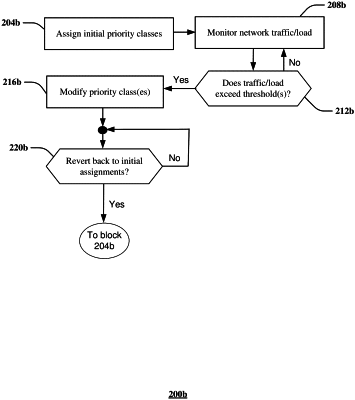| CPC H04W 72/56 (2023.01) [H04W 24/08 (2013.01); H04W 72/52 (2023.01)] | 20 Claims |

|
16. A method, comprising:
identifying, by a processing system including a processor, a first user of a service of a network;
providing, by the processing system and in accordance with the identifying of the first user, the first user with a first amount of access to resources of the network when network traffic in the network is less than a threshold;
providing, by the processing system and in accordance with the identifying of the first user, a second amount of access to the resources of the network responsive to the network traffic for the network being greater than the threshold, wherein the second amount of access to the resources provides the first user with greater access to the resources than the first amount of access to the resources;
identifying, by the processing system, a second user of the service;
providing, by the processing system and in accordance with the identifying of the second user, the second user with the first amount of access to the resources of the network when the network traffic in the network is less than the threshold; and
providing, by the processing system and in accordance with the identifying of the second user, a third amount of access to the resources of the network when the network traffic in the network is greater than the threshold, wherein the third amount of access to the resources provides the second user with less access to the resources than the first amount of access to the resources.
|